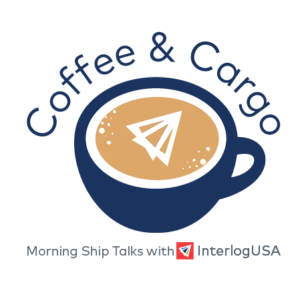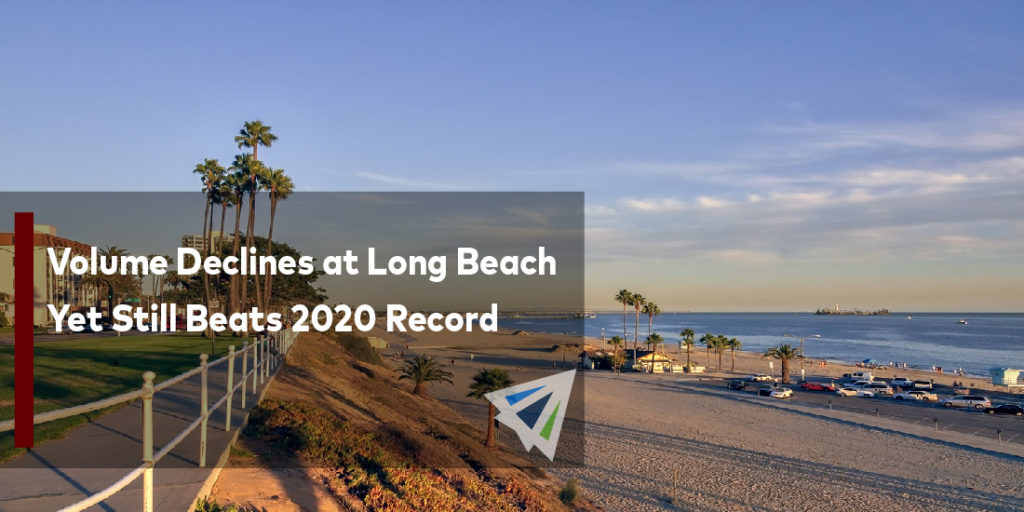Competitive Edge
December 22nd, 2021
Stay Current with Interlog’s Weekly Newsletter:
Sign up for our next Coffee & Cargo webinar –> CLICK HERE

Ocean Freight Market Update
HEADLINES
- MSC is extending coverage from China to U.S. by adding a call in Seattle. The move is intended to increase needed capacity into the U.S. market.
- Container shipping pre-tax profit for 2021 and 2022 could be as high as $300 billion, according to Drewry, an independent maritime research consultancy.
- Fitch Ratings maintains its neutral outlook on the global shipping sector due to continued strong market conditions in the container shipping and dry bulk segments, and expectations that the tanker segment could improve after a weak 2021.
- US steel, aluminum prices face year-end inventory pressure as supply tightens and demand soars
U.S./CAN Ports with Notable Congestion
- Savannah, GA: 13 Backlogged Vessels
- Los Angeles/Long Beach, CA: Around 90 Backlogged Vessels
- Vancouver, BC, CAN: 36 Backlogged Vessels
IMPORT: Asia to North America (TPEB)
Recent Developments:
- Pre-Chinese New Year demand forecasts remain strong and additional blank sailings have been announced. That said, potential rate increases are expected which will constrain capacity outlook.
- Surges in COVID-19 cases in Zhejiang, CN could pose challenges for urgent cargo in the region.
- MSC is extending coverage from China to U.S. by adding a call in Seattle. The move is intended to increase needed capacity into the U.S. market.
- The first sailing from Yantian to Seattle will start on December 28 with MSC MARGRIT
- Congestion, delays, and sliding schedules all remain as significant market challenges.
Rates: Rate levels remain risen due to strong pre-Lunar New Year and premium market demand.
Space: Remains critical.
Capacity/Equipment: Severe undercapacity and critical deficits for equipment.
TIPS: With MSC adding a Seattle call, importers should consider if that is a viable alternative to avoid LA/LB port congestion.
IMPORT: Europe to North America (TAWB)
Recent Developments:
- USWC remains heavily congested at Los Angeles/Long Beach despite improvements in flow at the docks.
- USEC port congestion is manageable currently as many lines find alternatives to Savannah port.
Rates: December rates are set to remain elevated for USEC and USWC. Rate increase announced for Mediterranean origins.
Space: Remains critical for both coasts, especially the USWC.
Capacity/Equipment: Capacity remains tight for both North Europe and Mediterranean services. Equipment availability at ports, however shortages remain inland.
TIPS: Book 5 or more weeks prior to CRD. Request premium service for higher reliability and no-roll guarantees.
EXPORT: North America to Asia
Recent Developments:
- Diminishing schedule integrity is contributing to void sailings, delay, and challenging post earliest return dates.
- Vessel arrivals remain fluid for USWC POLs.
Rates: Multiple GRIs are likely to be implemented for Indian and Australian destinations. January GRIs are anticipated for select Southeast Asia and Oceania destinations.
Capacity: Available capacity remains fluid for USWC POLs. USEC capacity has become for readily available.
TIPS: Book 4 to 6 weeks in advance to secure the appropriate equipment and vessel space.
AIR FREIGHT: United States
Export:
- US export demand will remain high until the last weeks of December. Larger shipments from outbound gateways can take 2 to 4 days from booking to uplift to Europe, Latin America, and Asia destinations.
- Transpacific to Asia and transatlantic to Europe have not experienced any cancellations due to the new COVID variant.
- Rates to Latin America, Europe, and Asia are subject to seasonal increases and will remain higher until the final weeks of December.
Import:
- US has lifted the ban on travelers from the EU causing European Airlines to introduce more bellyhold capacity.
- LAX/ORD/JFK ground handlers continue to face backlogs and are using off-airport facilities to manage the flood of inbound cargo.
TIPS: Book early considering the current dwell time at airports.
Did You Know?
Americans spend $9.36 billion on gift wrap!
Freight News
Pakistan is Considering Entering the Container Shipping Market With its Own Fleet
Pakistan is exploring the option to get into the container shipping market with its own fleet. According to Reuters, Pakistan’s Federal Minister of Maritime Affairs Ali Haider Zaidi said that before it launches discussions on the number of box ships it will acquire, the country would initially charter space on container vessels and test the market. As of now, the Pakistan National Shipping Corporation has a fleet of 11 ships, which include oil tankers and dry bulkers, according to Reuters.
Since 2003 Pakistan has run consistent trade deficits, mainly due to high imports of energy. This year in November, Pakistan recorded a trade deficit of 862,093 PKR million (4,840,499.69 USD), according to Trading Economics. Pakistan’s trade deficit also increased by 32.9 per cent (7.616 billion USD), in the 2021 fiscal year, according to the Ministry of Commerce data, that deficit is due to lower export proceeds and higher than anticipated import costs. Pakistan records trade surpluses with the U.S., Afghanistan, Germany, and United Kingdom.
In 2019, Pakistan’s top 5 export and import partners were the United Arab Emirates, the U.S. United Kingdom, Germany, and Saudi Arabia, according to World Integrated Trade Solution. In June of this year, Prime Minister Imran Khan’s trade adviser said Pakistan will cut taxes on imports of raw materials to spur manufacturing and overall economic growth. According to Bloomberg, customs duties on input items needed by pharmaceutical, chemical, engineering and food processing industries will be reduced by 3% to 10%. This helps reduce the import of finished goods, encourage local production, and put the nation in a position to boost exports.
Ben Schwengel, our International Operations Director provided his thoughts:
“In 2021, chartered container ships have been plagued with problems stemming from their underdeveloped cargo release processes and multiple levels of brokers. I expect that CFR will be the most common incoterm, with the freight negotiated and paid at origin. The arrival issues would be handled by the importers’ chosen forwarders and customs brokers. A state-owned ocean carrier giving preferential rates and space will be welcomed by Pakistani suppliers, and similar industrialized nations will be watching to see how their trial performs.”
Multiple Factory Closures Have Occurred Throughout China’s Zhejiang Province due to Covid Outbreaks
Multiple factory closures have occurred throughout China’s Zhejiang province in the last week, due to Covid outbreaks which have resulted in lockdowns. According to Westbound Global there has been an indefinite lockdown in the Yangtze Delta area, including the cities of Ningbo, Shaoxing, and Hangzhou.
Authorities in Zhejiang have stated that the province will have to abide by strict travel controls, which will prevent the public from traveling in and out, sources say this could last up until March 2022.
In addition to the lockdowns, availability has been low, demand has been high, and costs have increased for transport to and from the Ningbo port, which have all been the result of increased trucking regulations that are being applied.
To Watch Last Week's Webinar:

We discussed west coast port congestion & LA port fee update, increases in blank sailings for transpacific lanes, current events and more!
Sign up for our
industry answers
Our team works to provide valuable, unique, and relevant content to assist you in finding solutions. Sign up now.
